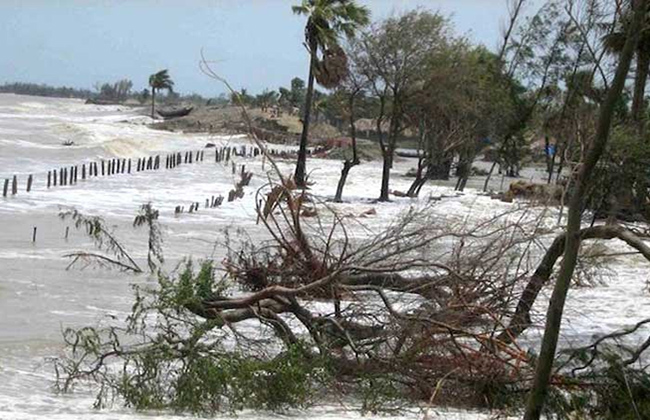
The problem of salinity in the southern part of the country is a long-standing problem. This problem is even exacerbated by climate change effects. That millions of people in coastal areas are under health threats and also that the land productivity there is declining at a faster pace is already a much known fact. What is new is that a recent research by the World Bank reveals that 20 per cent of women in coastal areas of Bangladesh suffer pregnancy loss due to salinity, which is of great concern.
Of the initiatives taken during the Pakistan period to stop salinity in coastal areas, the embankment is notable. But after Sidr and Aila, dams of a number of areas were broken which have not been repaired till today. For shrimp cultivation too, many farmers get salty water in their acreages, by cleaving the dam. Although some shrimp farmers are benefiting from this, most of the residents of the area are about to lose their source of livelihood.
Human body needs a certain amount of salt, and it comes from food and water. But the amount of salt the water in coastal areas contains is many times higher than the requirement. Health risks multiply when this water enters the human body. This becomes even more dangerous, especially for pregnant women. If women drink more saline water during their pregnancy, convulsion and high blood pressure may occur among them. Because of this, women have higher rates of stillbirth during pregnancy, as emerged in the World Bank report. According to a study by the International Centre for Diarrhoeal Disease Research, Bangladesh (ICDDR,b), not only do coastal women suffer spontaneous abortions, due to salinity, but also five per cent of children die because of this. In addition, high blood pressure is associated with high salt intake, which increases the risk of heart disease.
According to experts, if coastal people drink less saline water, such as rain water, their blood pressure can be reduced. To protect the southern people from this health hazard, we will have to ensure fresh and drinkable water for them. This can be done by digging large ponds and preserving rain water. But the people of that area are so poor that it is not possible for them to dig a pond or preserve the rain water for long. Therefore, government initiatives are necessary to arrange for the excavation of ponds and retention of rain water. Our budget has crossed six lakh crore taka for the upcoming fiscal year. Why will not the southern people have enough allocations for the protection of their health and the prevention of miscarriage among pregnant mothers?
